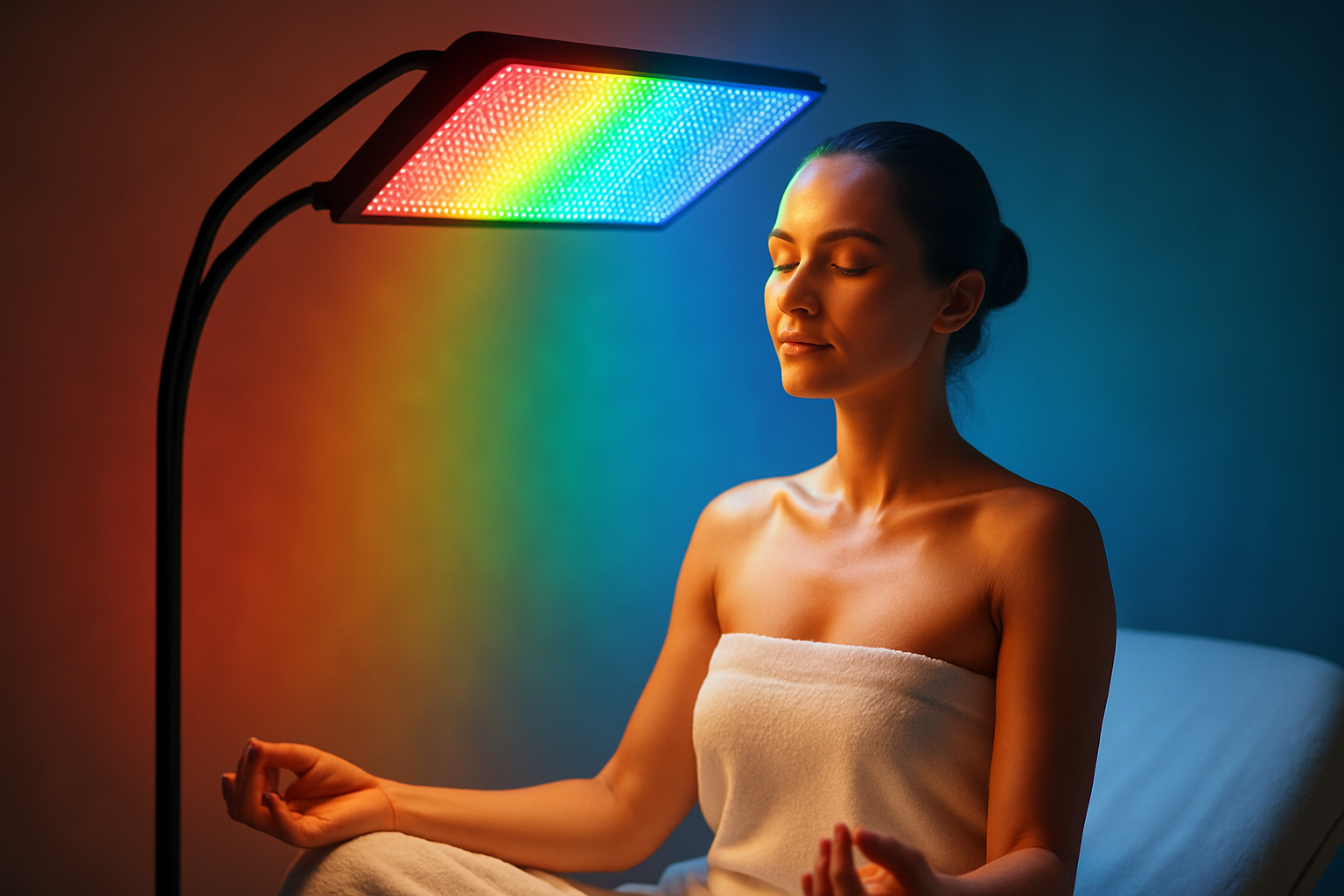Chromotherapy: The Spectrum of Wellness
In the ever-evolving landscape of beauty and fitness, a captivating yet often overlooked practice is gaining momentum: chromotherapy. This ancient healing technique, also known as color therapy, harnesses the power of different light wavelengths to promote physical and emotional well-being. As we delve into the vibrant world of chromotherapy, we'll explore its rich history, modern applications, and the science behind its potential benefits. From spa treatments to home wellness routines, chromotherapy is painting a new picture of holistic health that's both visually stunning and potentially transformative.

Despite its ancient origins, chromotherapy fell out of favor with the rise of modern medicine. However, the 20th century saw a resurgence of interest, particularly with the work of Dinshah Ghadiali, who developed a comprehensive system of color therapy in the 1920s. Ghadiali’s work, though controversial at the time, laid the groundwork for modern chromotherapy practices.
The Science of Color and Light
At its core, chromotherapy is based on the principle that different colors of light can affect our bodies and minds in various ways. Each color corresponds to a specific wavelength of light, which interacts with our cells and biological processes. Red light, for example, has a longer wavelength and is believed to stimulate and energize, while blue light has a shorter wavelength and is often associated with calming effects.
Recent scientific studies have begun to shed light on the potential mechanisms behind chromotherapy. Research has shown that exposure to different colors can influence the production of melatonin and serotonin, hormones that regulate sleep and mood. Additionally, certain wavelengths of light have been found to affect cellular energy production, potentially influencing various physiological processes.
Chromotherapy in Modern Wellness Practices
Today, chromotherapy is finding its way into a variety of wellness and beauty treatments. High-end spas and wellness centers are incorporating color therapy into their offerings, creating immersive experiences that combine light, sound, and aromatherapy. These treatments often involve lying in a room bathed in changing colored lights, with each hue purportedly offering different benefits.
In the realm of skincare, LED light therapy has gained popularity as a non-invasive treatment for various skin concerns. Red LED light is used to stimulate collagen production and reduce inflammation, while blue light is believed to have antibacterial properties, making it useful for acne treatment. Green light is sometimes used to address hyperpigmentation and promote lymphatic drainage.
DIY Chromotherapy: Bringing Color Healing Home
The growing interest in chromotherapy has led to the development of various at-home devices and tools. Color therapy glasses, which filter light through different colored lenses, are becoming increasingly popular for those seeking to incorporate chromotherapy into their daily lives. Proponents claim that wearing these glasses for short periods can help balance emotions, improve focus, and even alleviate physical discomfort.
Smart lighting systems have also embraced the concept of chromotherapy, allowing users to bathe their living spaces in different colors to create specific moods or support various activities. For example, warm orange tones might be used in the evening to promote relaxation, while cooler blue hues could be employed during work hours to enhance concentration.
The Rainbow Diet: Chromotherapy in Nutrition
The principles of chromotherapy have even influenced dietary trends, giving rise to the concept of the “rainbow diet.” This approach encourages consuming a wide variety of colorful fruits and vegetables, each offering unique health benefits. While not strictly related to light therapy, this nutritional strategy aligns with the chromotherapy philosophy that different colors can have distinct effects on our well-being.
Proponents of the rainbow diet argue that the vibrant colors of natural foods indicate the presence of various phytonutrients and antioxidants. For instance, red fruits and vegetables like tomatoes and watermelon contain lycopene, while blue and purple produce often boast high levels of anthocyanins. By “eating the rainbow,” individuals aim to obtain a diverse array of nutrients to support overall health.
Chromotherapy in Fitness Environments
The fitness industry has also begun to explore the potential benefits of chromotherapy. Some innovative gyms and workout studios are incorporating color-changing LED systems into their spaces, allowing instructors to adjust the lighting to complement different phases of a workout. For example, energizing red light might be used during high-intensity intervals, while calming blue light could accompany cool-down stretches.
Virtual reality fitness experiences are taking this concept even further, creating immersive, color-rich environments that respond to users’ movements and heart rates. These technologies aim to enhance motivation, mood, and performance by leveraging the psychological and physiological effects of different colors.
The Future of Chromotherapy: Challenges and Opportunities
As chromotherapy continues to gain attention in the wellness world, it faces both exciting opportunities and significant challenges. On one hand, advances in LED technology and our understanding of light’s effects on the body are opening up new possibilities for targeted, personalized color therapy treatments. On the other hand, the field still lacks robust scientific evidence for many of its claims, and skeptics argue that any benefits may be largely due to placebo effects.
Moving forward, more rigorous research is needed to fully understand the potential applications and limitations of chromotherapy. As studies continue to explore the intricate relationships between light, color, and human biology, we may uncover new ways to harness the spectrum for health and well-being.
In conclusion, chromotherapy represents a fascinating intersection of ancient wisdom and modern technology in the pursuit of wellness. While its efficacy remains a subject of debate, the growing interest in color therapy reflects a broader trend towards holistic, multi-sensory approaches to health and beauty. As we continue to explore the vibrant world of chromotherapy, it’s clear that this colorful practice is adding an intriguing new dimension to the landscape of wellness and self-care.





